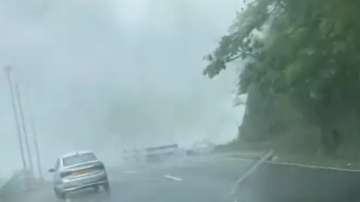If you have been even a little bit attentive in your Geography or General Knowledge classes, you must have come across the question -- What is the world's wettest place? The answer that automatically comes to one's mind is Cherrapunji. The same was the case with Anand Mahindra. The Indian billionaire businessman and the chairman of Mahindra Group shared about it on Twitter. He posted a viral video of heavy rainfall at the place. He was amused to see it. However, unlike popular opinion, the place was not Cherrapunji but Mawsynram.
Mawsynram, about 56 kilometres from Shillong, is a tiny village in Meghalaya. Along with Cherrapunji, it is known for being the wettest place on Earth. It is said to receive nearly 11,872 mm (39ft) of rain per year! It is, however, a natural paradise, and visitors enjoy the fresh air, sliding slopes, and rolling green mountains.
"When I was in school, the answer to ‘What is the wettest place in the world’ was Cherrapunji. Didn’t know Mawsynram is at the top of the podium. The visuals here are amazing," he tweeted.
As monsoon rain lashes northeast region wreaking havoc and killing people, Mawsynram and Sohra in Meghalaya's East Khasi Hills district are in a competition to be the wettest place in the country recording record rainfall in the last 24 hours, IMD officials said Friday.
Located on opposite cliffs, the gorges of which face the plains of Bangladesh, Sohra (erstwhile Cherrapunji) recorded a massive 972 mm of rainfall in 24 hours ending 8:30 am today while Mawsynram, on the other hand, received 1003.6 mm of rainfall during the same period, the highest rainfall for a day, the IMD officials said.
Sohra's record for June 17 is the third highest rainfall recorded since June 16, 1995 (1563.3 mm) .
The highest rainfall was last recorded on June 7, 1966 with 945.4 mm for Mawsynram and during that year, the town gauged 4 days of record rainfall – all above 700 mm in 24 hours.
According to IMD officials, Sohra town also received a total of 2457.2 mm of rainfall in the last three days, higher than what Mumbai and Delhi would have received in 3 years.
